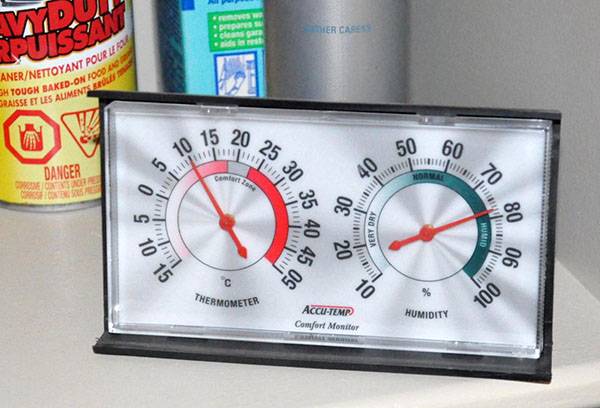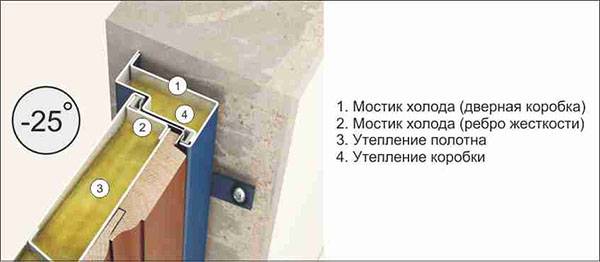6 reasons for the appearance of condensation on the front door and methods for its elimination
Never faced such a problem as condensation on the front door, only residents of apartment buildings and people who were lucky with the quality of the installation, the device of the door leaf, and at the same time the construction of the house. And what do you think: there are a lot of factors that need to be taken into account to eliminate the problem, so in search of a condensate source you will have to conduct an inspection and analysis of the structure on several fronts.
Why does the canvas fog up and why is it dangerous?
Condensation on the entrance metal door, and not only, is formed due to the difference in surface and air temperatures. The same phenomenon can be observed on an aluminum can from a refrigerator or on car windows in the cold season. When the air in the room is relatively warm and the surface is colder, with certain indications of air temperature and humidity, it reaches the dew point temperature, when the vapor from the air passes into the liquid form and collects on this same surface.
For example, at a temperature in the dressing room of 21 ° C and a humidity of 50%, the dew point for the door surface will be 10.2 degrees. Given the high heat and, in our case, the cold conductivity of the metal, at a low temperature outside, the door in a private house will be stably covered with condensate.
The dew or even frost on the inside of the front door does not add comfort to the atmosphere, but the most unpleasant thing is that the iron doors fog up not only from the outside, but also from the inside, which can lead to a quick failure of the structure. Buying an entrance door, everyone wants to get high quality at a reasonable price, but if you decide to save money and buy a system without internal anti-corrosion treatment in a country house, be prepared for the fact that it will not last long. Unless, of course, you solve the fogging problem before the canvas rusts.
Tip
The main thing is to understand why the door is sweating, and to identify the weak side of the box, canvas or room bordering it.
How to determine the cause of fogging and what to do?
By and large, there is only one reason - the aforementioned temperature difference. But it can occur due to several factors.
- The cloth is poorly insulated
Mostly the front doors sweat due to poor insulation. If you bought a canvas without high-quality insulation, the ways to rectify the situation are to try to warm it yourself or change the canvas. The cavities in the canvas can be filled with foam, but it’s better to think about a high-quality layer of insulation inside the door before buying.
- The box is poorly insulated
In this case, condensate can form not only on the box itself, but also on the canvas along the perimeter of contact with it. You can insulate it with the same foam, mineral wool or polystyrene, and since you still have to dismantle the box for this, check if the doorway is adequately foamed. If there were cavities between it and the box, the cause of fogging could be covered in them, and it was not the manufacturers who were to blame, but the installers.
Tip
In addition to insulating boxes and canvas, you can also insulate the slopes from the outside, if the external decoration of the facades allows.
- Leakage
The door may become condensed if there is a leakage between the sheet and the box, which can be checked quite easily by the presence of drafts. In this case, the dew will accumulate mainly around the perimeter of the canvas and boxes. In this case, to fix the problem will help a regular self-adhesive rubber seal, which must be attached to the box and the canvas around the perimeter.
Important!
If a metal door is cheap and decorated with decorative panels, it is not a fact that the manufacturers duly performed anti-corrosion treatment of the metal under them. If the panels are loose and there are voids between them and the metal, then the door will start sweating under the panels, and you will only know about it when it fails.
- Bridges of cold
Another reason why the front door is sweating, even with good insulation, is the cold bridges, which are in almost all doors. Cold bridges are through metal elements, such as locks or stiffeners, which are not separated by thermal insulation or at least voids and perfectly conduct cold on the inner surface of the canvas. Even when foaming cavities in the canvas, local sweating in the area of such a bridge can be avoided only by the following method.
Tip
Sometimes bridges of cold simply can not be avoided: usually a castle and a peephole, and this is enough. But in the case of the lock, you can at least use a retractable pad or not choose models with vertical crossbars.
- The room is too cold
Sometimes the front door leads directly to the corridor, but still more often in the house there is a vestibule. An unheated tambour, in which the air is warmer than outside, the cold with which lowers the temperature of the inner surface due to the above reasons. What to do if the entrance metal door sweats in this case? Try to slightly equalize the temperature of the inner surface of the canvas and the air in the vestibule with heating. The smaller the gap between these indicators, the greater the humidity required for dew. If you heat the air to 24 degrees, then with an average humidity of 50-60%, you need to heat the inner surface to only 14-16 degrees, which is easy to achieve due to thermal insulation, tightness and, most importantly, warm air. But if in the dressing room there will be 15 degrees, then with the same humidity the dew on the front doors will fall already at 4-7 degrees, and the temperature of the metal sheet without heating in the cold will be much lower.
Tip
If the vestibule is not provided, condensation will help to isolate the inner surface of the metal door from warmer air with a wooden door. The wooden door should be installed immediately after the metal one.
- The room is too humid
It's a shame, but the canvas can fog up even in a heated vestibule: recall that the higher the humidity, the smaller the difference in surface and air temperatures is required for the surface to become wet. For example, at 80% humidity and an air temperature of 24 degrees, dew will fall at a surface temperature of 20.3. That is, it is very warm and humid - worse than moderately warm and dry.
Of course, fogging doors will not become a problem for you if you buy expensive models with thermal break of cold bridges, heated boxes, weather-resistant surface treatment or a liquid insulation that insulates the metal from the air. But you will not have to remove this unpleasant phenomenon even with accessible doors, if you take care of high-quality insulation and maximum tightness, as well as a little understanding of the table of indicators of humidity and air temperature for the dew point.


